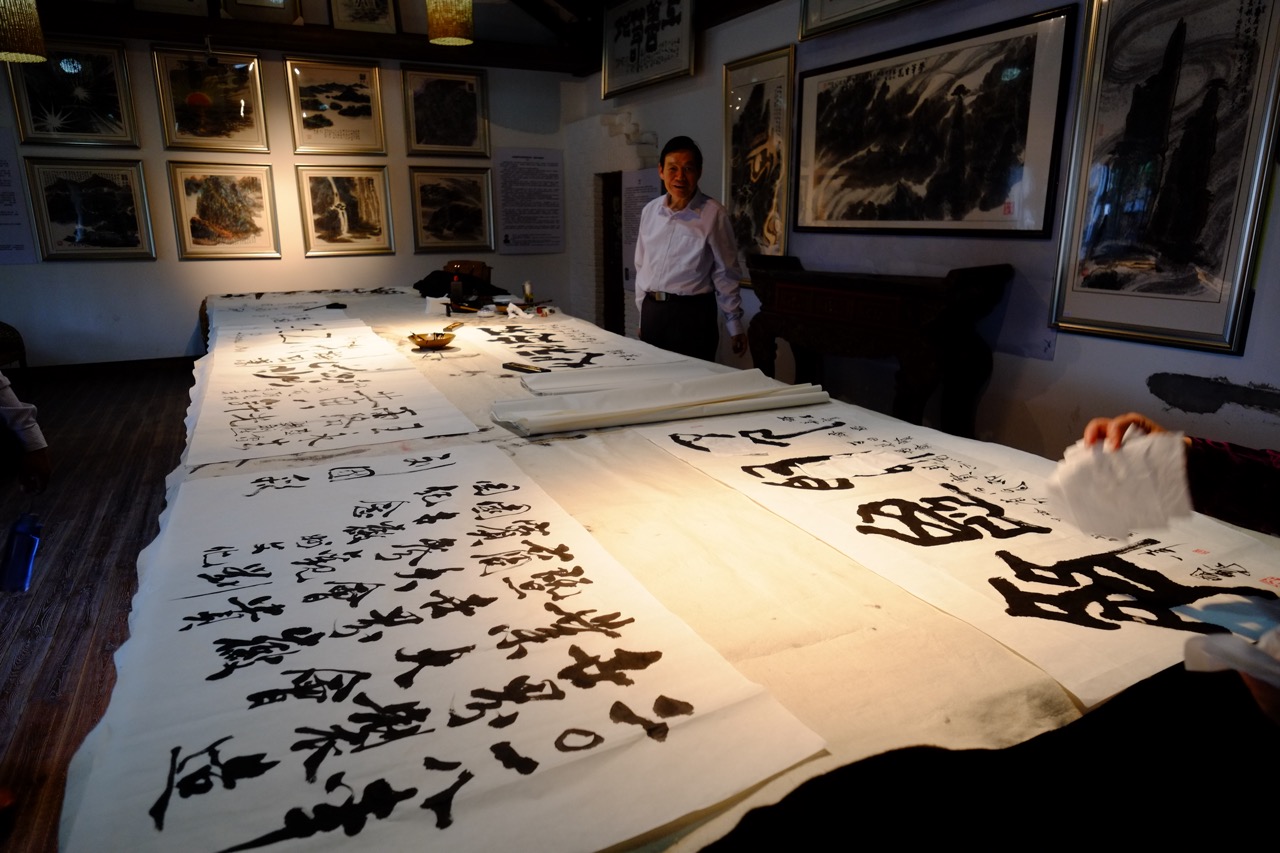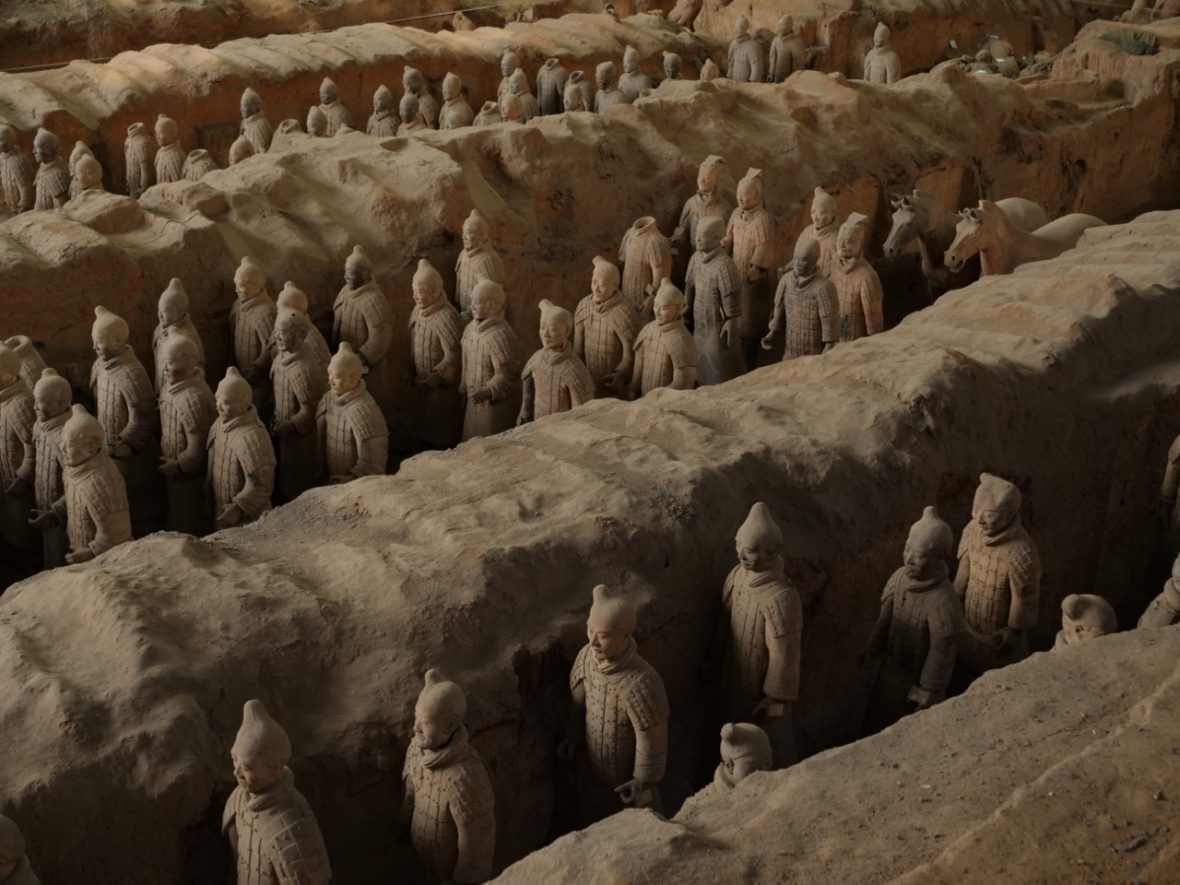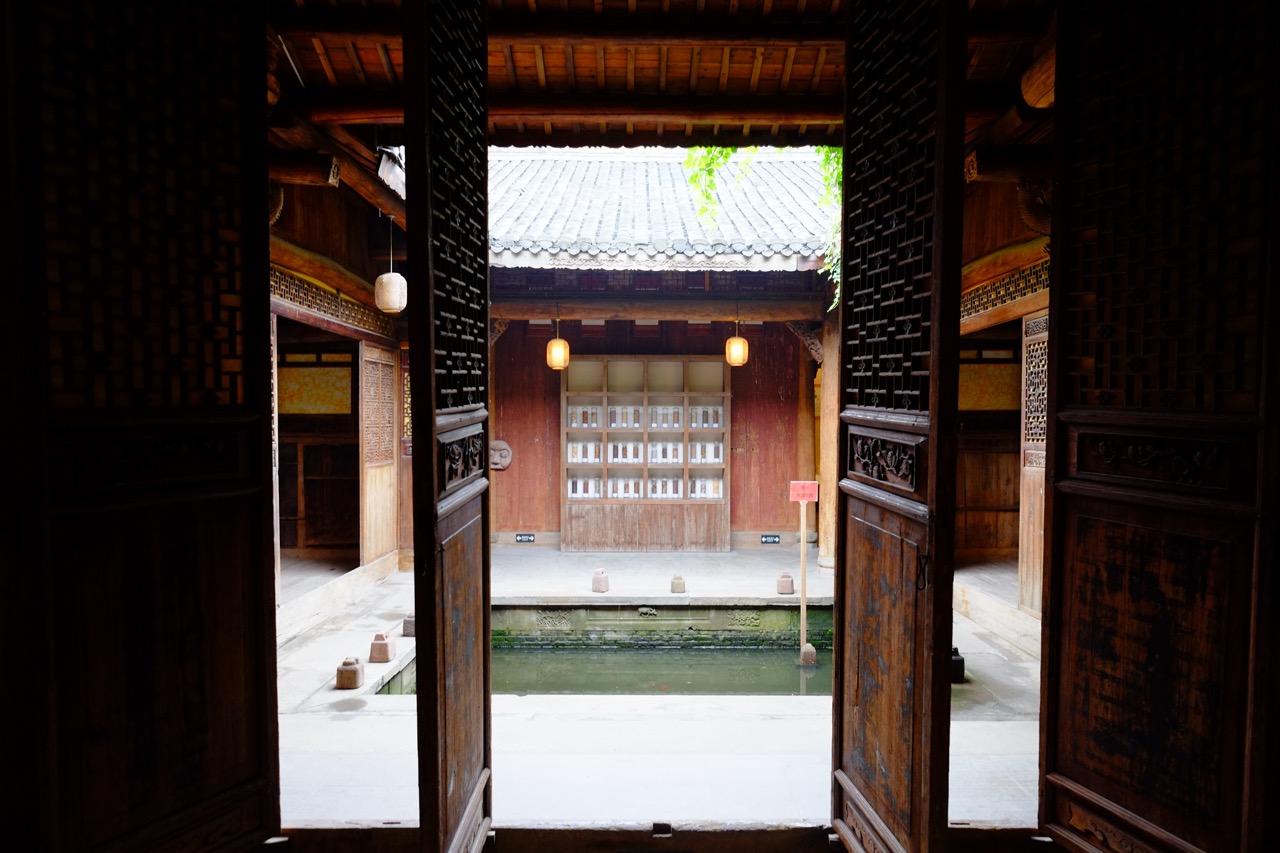The ancient history of China is marked by a whole succession of emperors. However, these emperors were not part of the same families or clans and this is why we speak of dynasties. This chronological vision allows us to better understand the long history of a civilization of four times millennia.
The founding dynasties of the Middle Kingdom
1. The period of the Three Augustans and the Five Emperors
This first part of Chinese history marks the beginning of the dynasties. Although there is very little information on this subject, it is thought that this first dynasty would have extended over eight centuries. This very first Chinese dynasty is in a way the founding act of China and the three thousand years of history that will follow. Although it is difficult to prove historically the existence of this dynasty, historians agree that this period is a clever mix between the reign of ancient warlords and Chinese mythology. Moreover, from the Han, two rulers (Fuxi and Huangdi) of the period of the Three Augustans and the Five Emperors will become Taoist Gods (notably under the Shang).
One of the heroes of the dynasty of the Three Augustans and the Five Emperors is none other than Emperor Shen Nong. The texts of Chinese mythology attribute to him the invention of plowing (via the hoe or the pointed plowshare), it is also he who would have discovered tea and the virtue of the medicinal plants. Shen Nong is considered the father of Chinese medicine and the “God of farmers”.
2. The Xia Dynasty
This Dynasty would have lasted from 2100 BC to 1600 BC, i.e. five hundred years. This Chinese dynasty would have existed perhaps in the north of China. And this is on a very small territory and would have been articulated around the yellow river, one of the biggest rivers in Asia.
Concerning the existence of the Xia Dynasty, we must be careful and wait for the results of the very promising excavations in the province of Shaanxi. Apart from this Neolithic site, most of the documents are texts that would have been established by the Zhou Dynasty, hence the caution of historians who fear a manipulation of history by this more recent dynasty and which would have possibly established its legitimacy by invoking the Xia Dynasty. The Zhou dynasty could also be a reminiscence of the Xia dynasty.
More consensually, historians agree that it is a very ancient and semi-mythical dynasty.
The Pre-Imperial Dynasties
3. The Shang Dynasty or Yin Dynasty
The Shang will reign in their empire between 1600 and 1046 BC. They will take the power from the Shang by denouncing their authoritarianism. With this dynasty, the power does not come anymore from the monarch but it is given by the skies. This is how Taoism appeared in China.
The Shang or Yin Dynasty marks a period of remarkable inventions. Indeed it is at this time that the work of bronze in the craft appears. And it is at this time that the Shang appears as outstanding jewelers combining bronze and jade stone to create jewelry.
The other strong moment of the dynasty and the founding fact of the Chinese civilization is the appearance of the writing and the famous Chinese ideograms under the reign of this Chinese dynasty.

But with time the Shang tipped over like their predecessors in authoritarianism and it is with the favor of this drift that king Wu (dynasty of Zhou) could seize the power.
The Dynasty of Zhou
The Chinese consider this dynasty one of the most important periods of their history. Firstly because it is the longest period of reign for the same imperial family but also for all the advances in the field of agriculture, and innovations in terms of military or political organization. Indeed it is thanks to this structuring of the Chinese world that the Zhou could reign without sharing for nearly eight centuries between the year -1046 and the year -256 (before JC).
On the cultural level, the Zhou dynasty played a major role. It is for example at this time that Lao Tseu, Confucius, and Mencius lived. To translate this literary and philosophical richness, historians like to call this period of history: “The Hundred Schools of Thought”.
4. The Western Zhou Dynasty
This first part of the history of the Zhou Dynasty is marked by decentralized power. The king relied on lords, each of whom formed his own state governed by feudal laws. And it is precisely this system that will cause the loss of the Zhou dynasty from the West. With a territory composed of lords relatively indifferent to the King, the dynasty knew troubles and a certain instability. As a climax the assassination of the Zhou king in -771 (before JC) by an alliance of infelicitous nobles.
5. The Eastern Zhou Dynasty
After the death of the king, it was decided to transfer the capital to the east of the kingdom in Luoyang. This is why it is called the Eastern Dynasty. This second part of the Zhou dynasty is characterized by a certain uncertainty and a non-negligible level of violence. It is in this context of wars and permanent conflicts that was written in 500 BC, the Art of War by a certain Sun Tzu.
All the Chinese Imperial Dynasties
6. The Qin Dynasty

With its fifteen short years of reign, the Qin dynasty was short but it marked a decisive turning point in Chinese history. For it will be really the first time that the territory was unified. And it is also under the Qin that China becomes a strong state. An empire that is leaning on the China Sea and which already foreshadows the future borders of China.

But beyond all these geographical and historical considerations, it should be noted that it is this decisive dynasty that will give the name of “China” to the vast empire of the middle. Indeed Qin in Chinese is pronounced “Tchin” and it is what finally gave the proper name “China”.
7. The Western Han Dynasty
As for the Zhou, this dynasty is divided into two periods. That of the Western Han and that of the Eastern Han. We also speak of the Earlier Han and the Later Han. This period is fundamental for China. It is indeed the first time that a peasant seizes the power and that he rules the country. But it is also under the Han that the country knows great territorial extensions. There were conquests, and military victories but also a subtle policy of alliances and marriages, notably with the Xiongnu ethnic group, a nomadic people living in the north of the empire. Another important point is trade. The Han dynasty gradually began to stretch westward, first following the silk routes.
8. The Xin Dynasty
This Chinese dynasty lasted only about fifteen years between the years 9 and 23 AD. It had only one emperor, a certain Wang Mang. He wished above all to practice a traditional Confucian policy but he was quickly confronted with many difficulties as well political and climatic. Faced with the disorder he had to leave power without having been able to convince anyone.
9. The Eastern Han Dynasty
This dynasty was founded by a certain Liu Bang, a warlord who opposed the Qin dynasty very early on. A short-lived dynasty that was in fact only a brief interlude of the four centuries of Han domination. Among all the Chinese dynasties, this period is considered to be a particularly auspicious and happy time in Chinese history.
10. The period of the three kingdoms of China
When the Han dynasty disappeared, it left the place to three kingdoms. Lords will share the empire that the last Han emperor was unable to impose. After the division, we find the Wei in the north, the Shu in the west, and the Wu in the south. An unusual dynasty that bore the title of the triple monarchy (San Guo).
But thanks to the conflicts between these three kingdoms, Jin will be able to impose itself and reunify the Middle Kingdom.
11. The Western Jin Dynasty
This Chinese dynasty will reign for about fifty years between the years 265 and 317 after JC.
12. The Eastern Jin Dynasty
Between the years 317 and 420, reigned the dynasty of Eastern Jin (or Eastern Jin).
13. The Northern and Southern Dynasties
Once again in the history of China, two dynasties will cohabit side by side. It is about this period of time of the dynasties known as the North and the South. A period which will last between the year 420 and 581 after JC, that is to say, more than 160 years.
14. The Sui Dynasty
What characterizes the Sui Dynasty is undoubted that it was the first to unify China once and for all. The Sui are those who will put an almost final end to the divisions. A period of relative stability that will begin in the year 581 to be completed in 618 is a duration of thirty-seven years.
15. The Tang Dynasty
This great dynasty which reigned for nearly three centuries took power with the decline of the Sui. Founded by the Li family, this dynasty ruled China from 618 to 907, a 289-year reign.
16. The Five Dynasties and Ten Kingdoms
This moment in Chinese history will last fifty-three years. It began in 907 and ended in 960, i.e. some 53 years of reign.
The five dynasties are: Later Liang (907-923), the Later Tang (903-936), and Later Jin (936-947). And for the last two, we have the Later Han (947-951) and the Later Zhou (951-960).
The ten kingdoms of this historical period are:
1. The Wu (from 907 to 937 AD)
2. The Wuyue (907-978)
3. The Min (909-978)
4. The Chu (907-951)
5. The Southern Han (from 917 to 971)
6. The Earlier Shu (from 907 to 925)
7. The Later Shu (from 934 to 965)
8. The Jingnan (from 924 to 963)
9. The Southern Tang (from 937 to 975)
10. The Northern Han (951 to 979)
17. The Liao Dynasty
Founded by a certain Khagan Khitan, this dynasty is distinguished by being the first to control a large part of Central Asia. Khitan settlements are found in Mongolia, Russia, and Central Asia. The Khitan are said to have descended from the Xianbei people, themselves descendants of the Donghu. This empire, which lasted 209 years, extended from 916 to the beginning of the 12th century (1125).
18. The Northern Song Dynasty
This dynasty reigned from 960 to 1127. That is 167 years of power. The Song entered history after the creation of the first banknote and this six centuries before its appearance in Europe.
19. The Southern Song Dynasty
The Southern Song ruled for 152 years from 1127 to 1279.
To discover more about the Song Dynasty, you can access the series of 25 programs of the podcast of our partner Bamboo Studio.
20. The Jin Dynasty
This great Chinese dynasty ruled in the Northeast while the Song dynasty ruled in Southern China. The Jin Dynasty was founded by a man named Jin Taizu. Jin ruled the northern part of China between 1115 and 1234. They had to give up their power when the Mongols of Genghis Khan launched their great invasion.
21. The Yuan Dynasty, one of the Chinese dysnaties
The Yuan ruled the country between 1271 and 1368. This dynasty was founded by a certain Kubilai Khan – the grandson of Genghis Khan. He made a point of following the Chinese tradition to the letter, which allowed this dynasty to remain in power for almost a century.
22. The Ming Dynasty
This Chinese dynasty is undoubtedly one of the most famous in the world. Indeed the Ming vases, generally blue and white, are recognized and appreciated by all the art lovers of the world. Moreover, the Ming period is recognized as the golden age of Chinese porcelain.
On a strictly historical level, the Ming ruled the Chinese empire from 1368 to 1644.
23. The Qing Dynasty

This was the last Chinese dynasty to take power in 1636 and relinquish power in 1912. Originally this dynasty was founded by Manchus and a certain Aliou Shetima. But with the end of the Napoleonic wars, the British began to consider China as a new opportunity. They launched for example the Opium War in 1843. In 1912, the Chinese dynasty system was finally extinguished.
photo credits : Yann Vernerie